Mudras in Mohiniattam – Part 1

#WednesdayWisdom is a series that began during the 40th anniversary celebration of Akademi to revisit Indian classical dance roots by sharing gems of knowledge from ancient Shastras (dance texts) that hold relevance even today. The blog is curated by Bharatanatyam artist, Suhani Dhanki, along with with our Head of Marketing, Antareepa Thakur.
In this blog series, we are inviting artists practicing different South Asian dance styles to contribute some interesting facts about their art forms, some of them rarely seen in the UK. Read our previous blogs in this series here.
This blogpost on Mudras in Mohiniattam is researched and written by Ranjitha Chowalloor, Mohiniattam artist. It is part 1 of a two part series. Part 2 will be released for our next #WednesdayWisdom.
The hand gestures used in Mohiniattam are mostly drawn from Hastalakshanadeepika, an ancient text in Sanskrit that articulates 24 mudras. An interesting fact about this ancient text is that the author remains unknown to this day and only a part of the text has been discovered thus far. The definition and usage are distinct from those mentioned in Bharata’s Natyashastra.
Art forms from Kerala like Kudiyattam, Nangjar kuthu, Krsnattam, Kathakali and Mohiniattam, along with other traditional art forms, have adopted the mudras laid down by the text. While Mohiniattam as an art form uses the simple mudras coupled with abhinaya to depict or express an emotion or a feeling, it is not as elaborate with mudras as one may see in the other art forms.
The mudras can be held in four different ways:
1) Asamyukta Mudra – holding the mudra in one hand
2) Samyukta Mudra – holding the mudra in both hands
3) Samana Mudra – holding the same mudra on both hands
4) Misra Mudra – holding different mudras on each hand
Below we will explore the first 12 mudras visually and learn what meanings they convey.
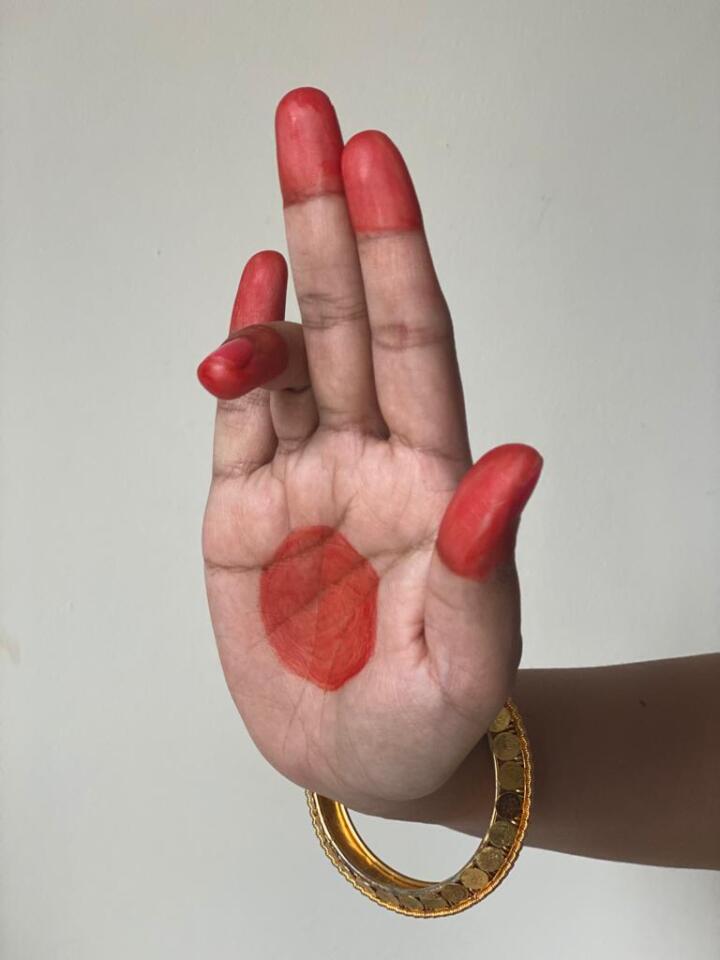
1) Patakam
Samyukta – sun, king, elephant, bull, earth, evening, temple door opening to the sanctum, bolt to a door, feet, crown
Asamyukta – to leave or go
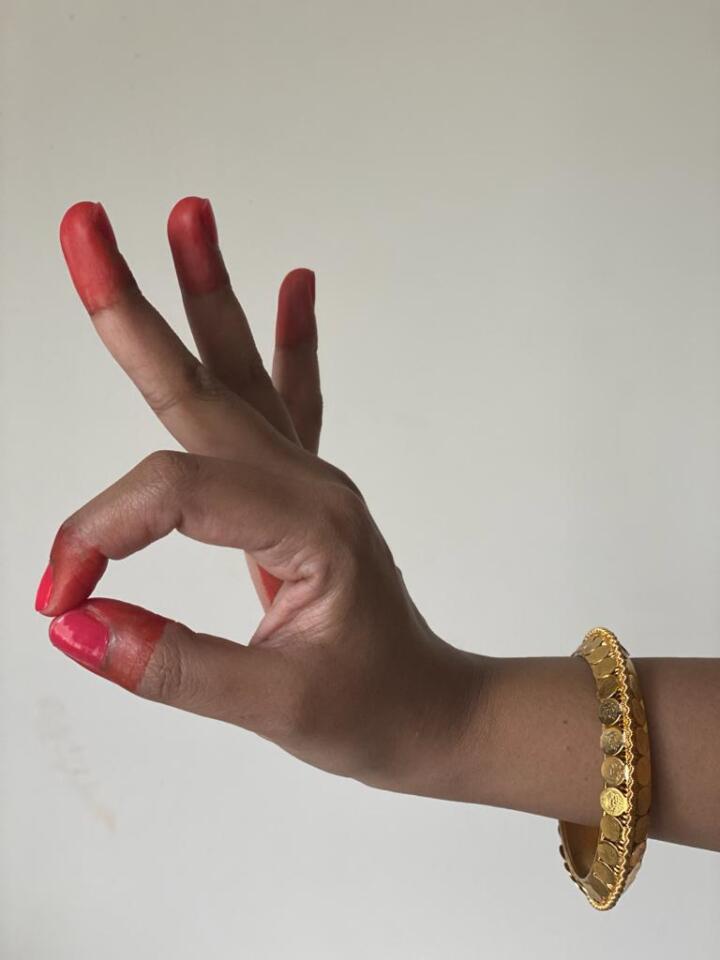
2) Mudrakhyam
Samyukta – meditation, heaven, life or breath or breathing, all or everything
Asamyukta – mind, thought, desire, to remember, feeling, knowledge
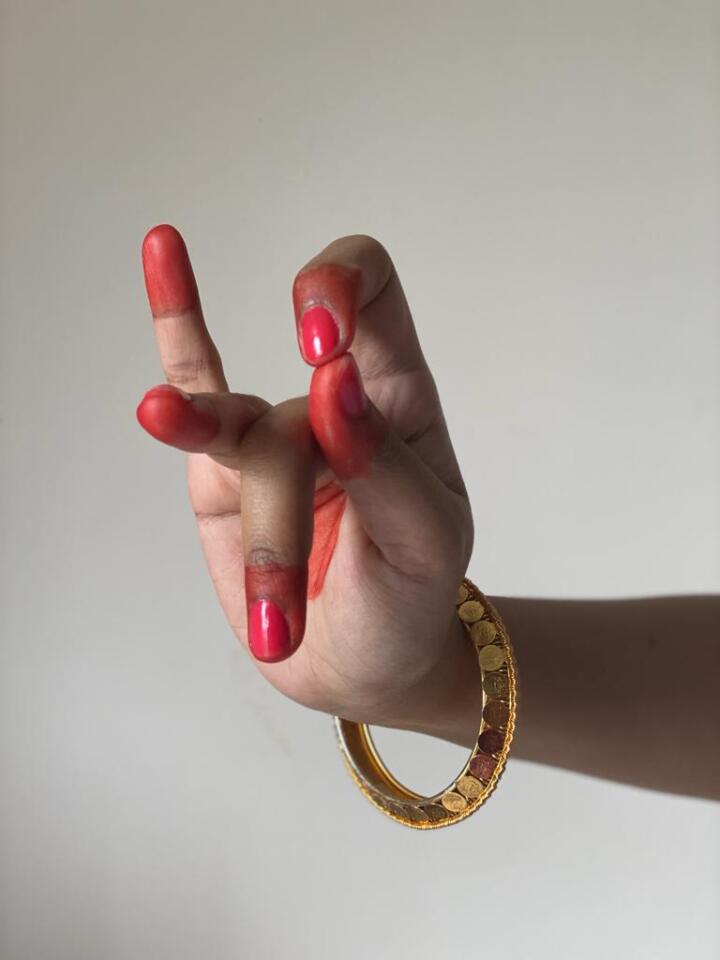
3) Katakam
Samyukta – gold, fragrance, sleeping, demon/demoness, cupid arrows, ornaments
Asamyukta – earring, single arrow, woman
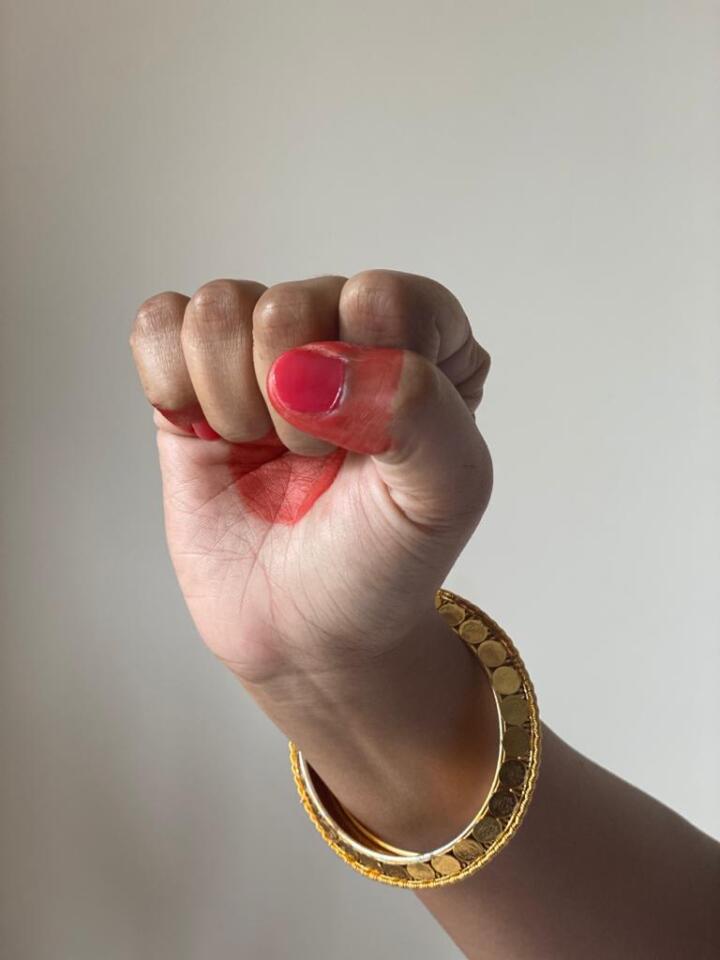
4) Mushti
Samyukta – beauty, to bless, act of giving or delivering, good qualities, force
Asamyukta – victory, to attack, bow, old age, food
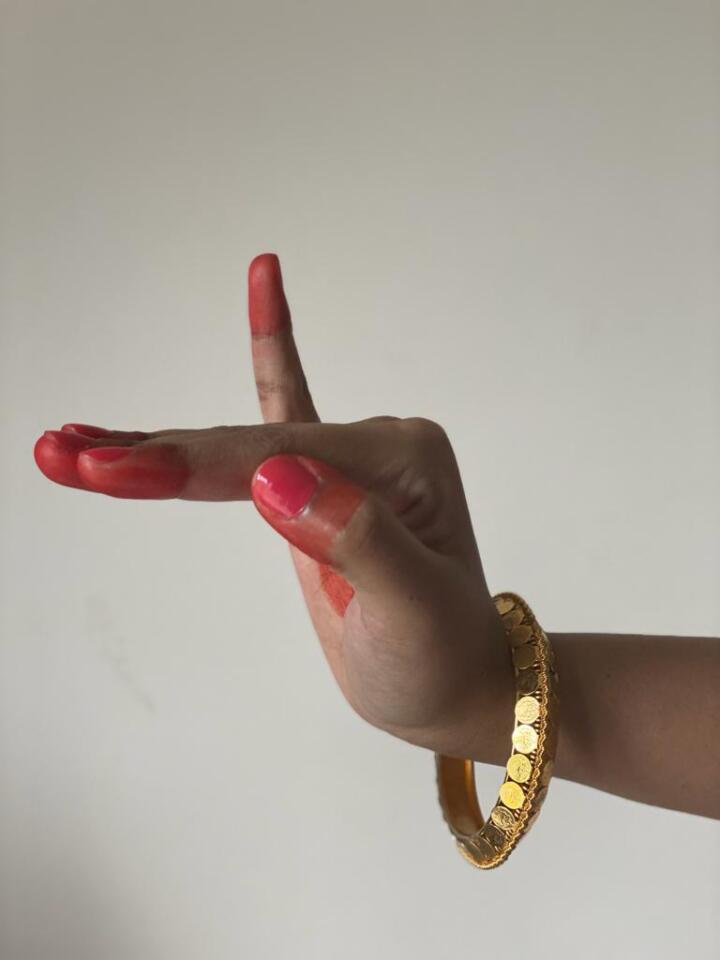
5) Kartharimukham
Samyukta – house, temple, to hear, to speak, namely, breeze, body, stomach, showing
Asamyukta – you, man or mankind, child
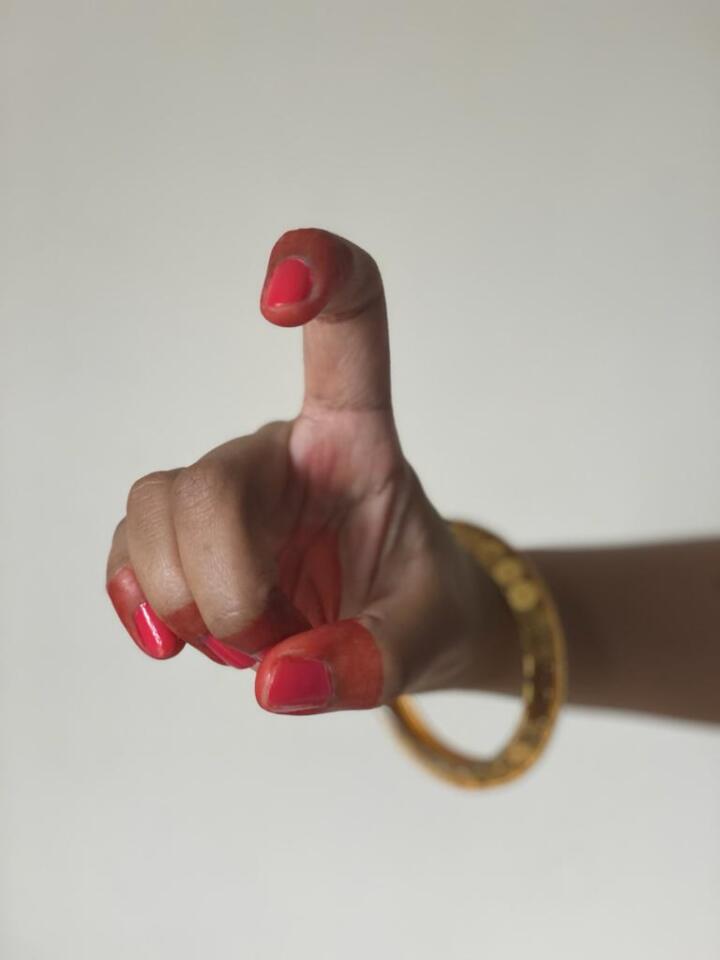
6) Shukathundam
Samyukta – bird
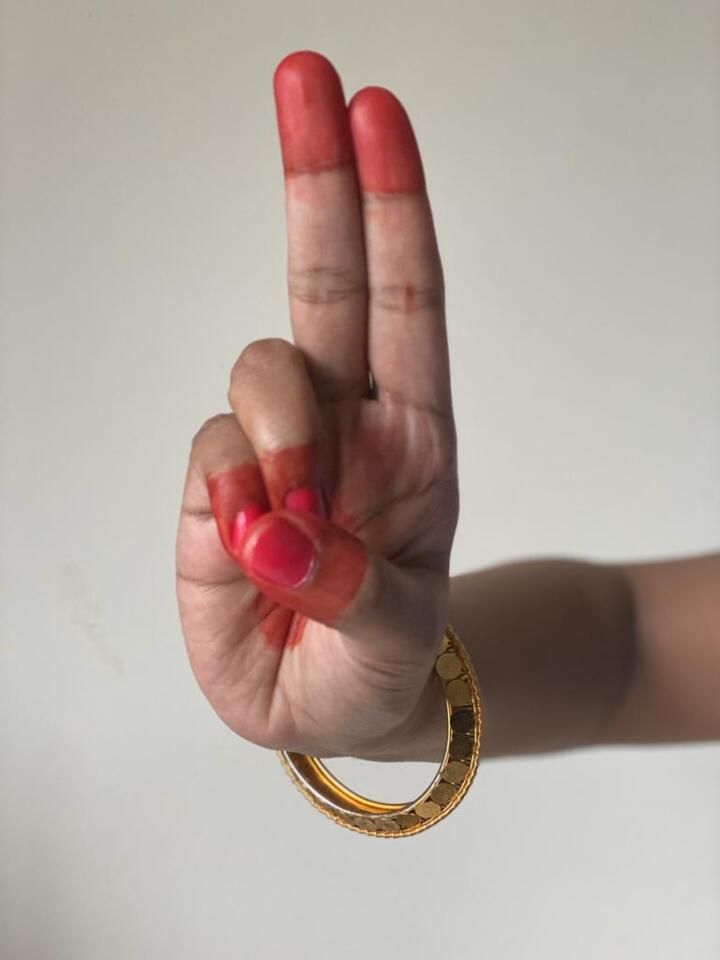
7) Kapithakam
Samyukta – to drink, to get down, to climb, deep hurt
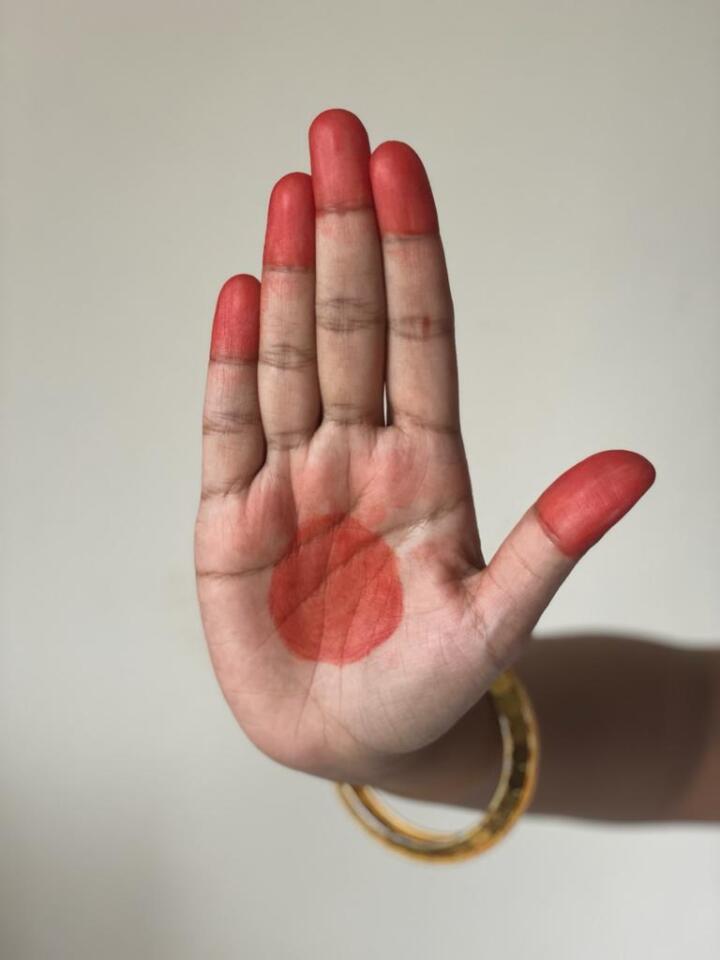
8) Hamsapaksham
Samyukta – full moon, wind, hair, to bless, to offer, to hide
Asamyukta – showing “you” & “I”, now, sword, flames
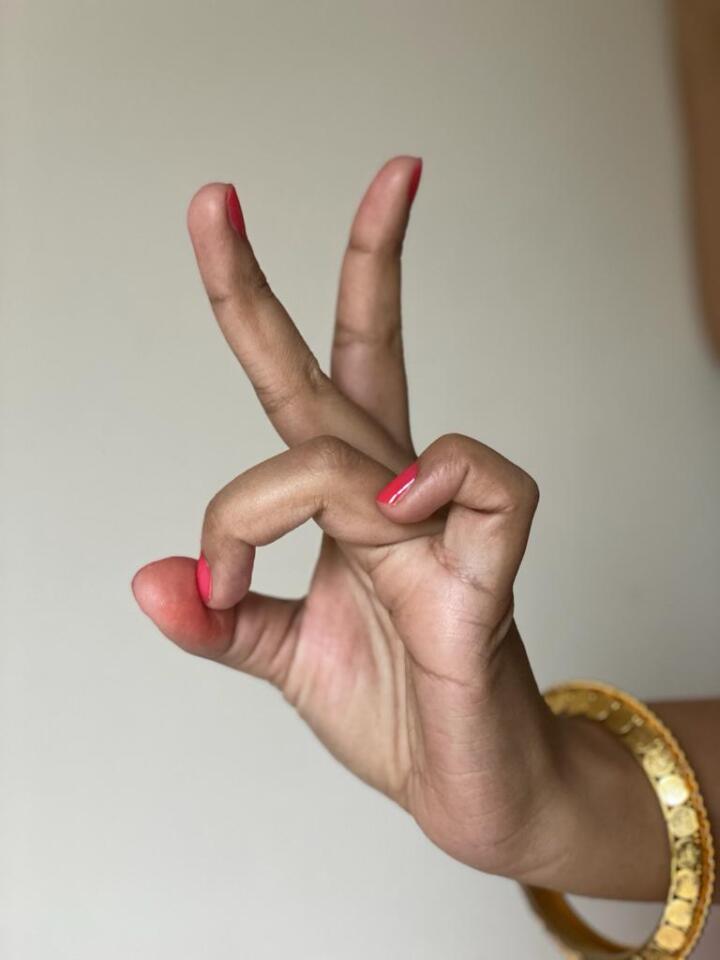
9) Shikhara
Samyukta – to see, to walk, to search, creeper
Asamyuta – to show eyes and Lord Shiva’s third eye
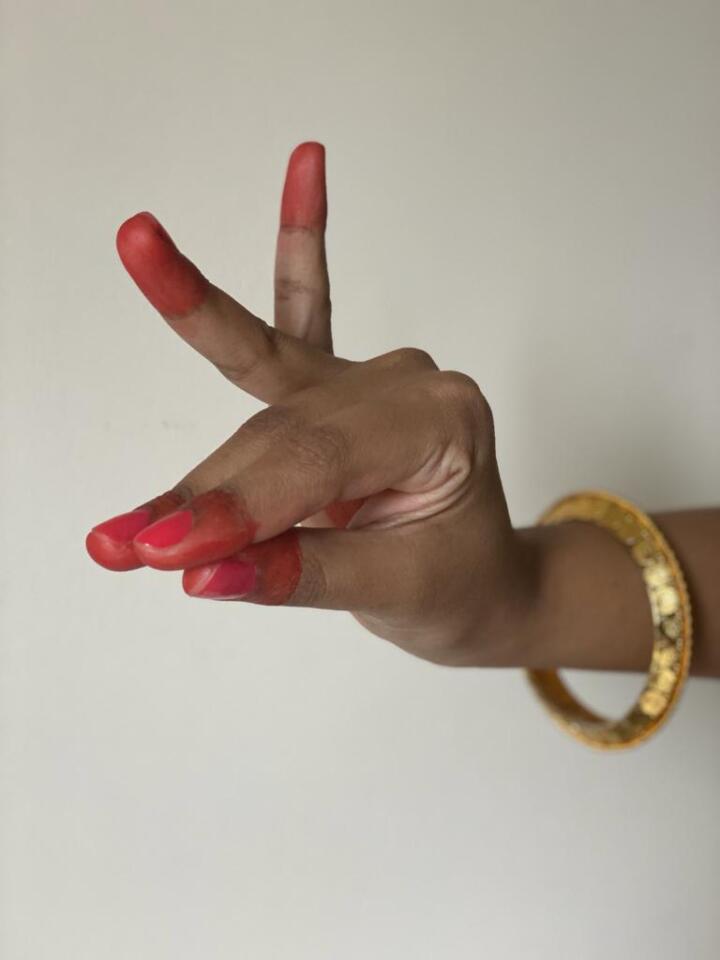
10) Hamsasyam
Samyukta – softness, mercy, affection, earrings, necklace, powder
Asamyukta – showing a line, making a garland
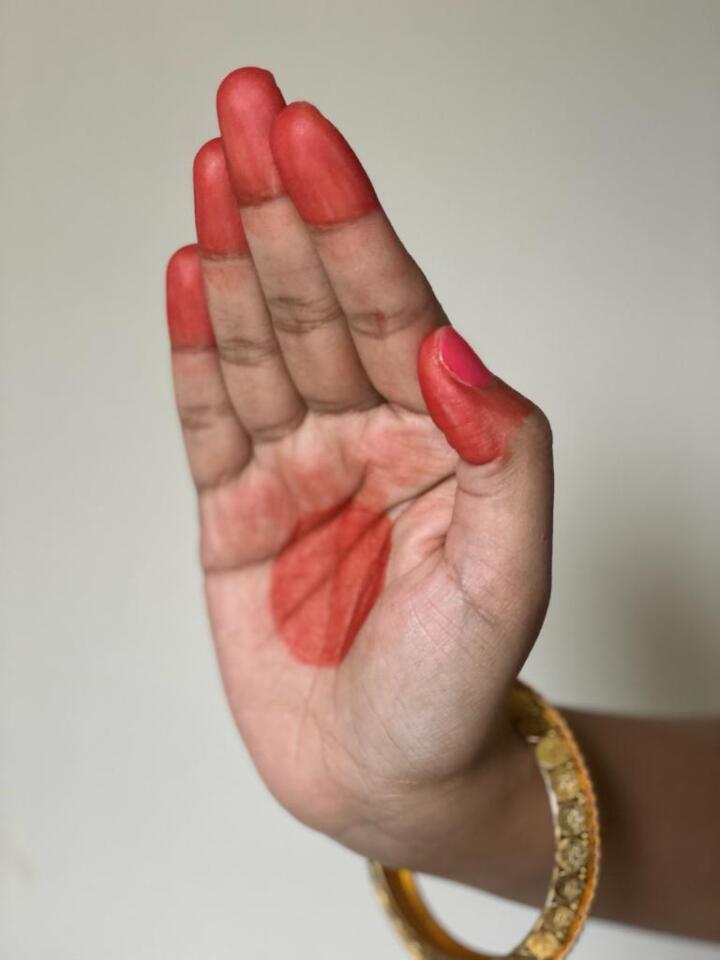
11) Anjali
Samyukta – river, to flow, confusion, embrace, terrible sound
Asamyukta – branches of a tree
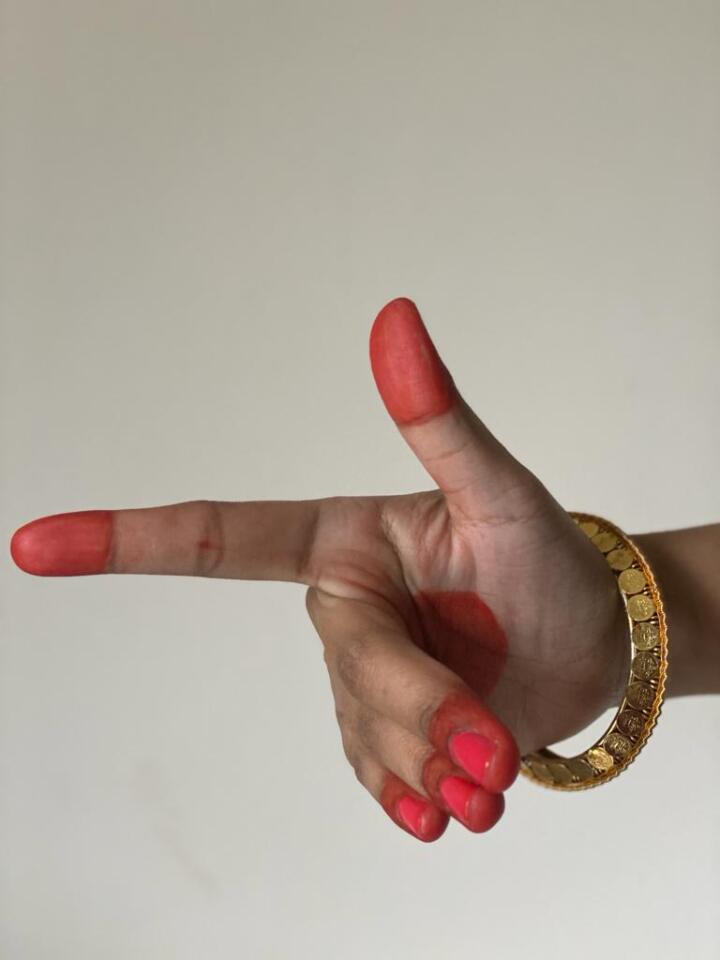
12) Ardhachandran
Samyukta – crescent or moon
Asamyukta – to smile, asking “what?”
Watch this space for part 2 of this series on Mudras in Mohiniattam on next week’s #WednesdayWisdom.